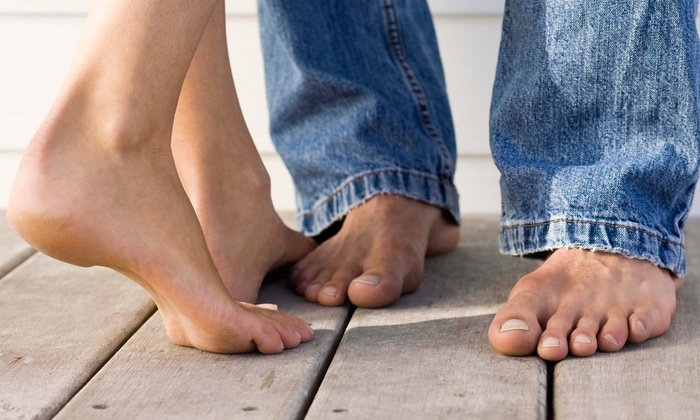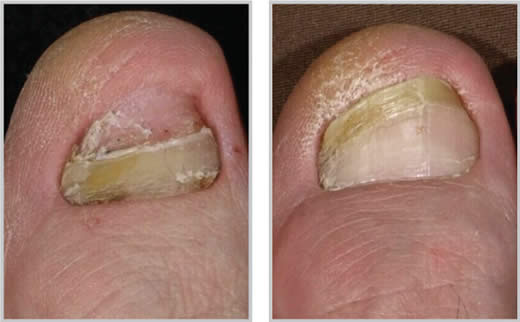Nail Fungal Infection (onychomycosis)
The medical term used for a nail fungal is onychomycosis.
In most cases it effects the toes nails with a small percentage affected fingernails. It is a common disease of the nails and constitutes about half of all nail abnormalities. In any case you should seek advise from your GP before exploring options such as Laser Nail Fungal removal.
Laser treatment is an option if you have a fungal nail infection that’s particularly stubborn. Our specialist technology that is also within the NHS supply chain uses high energy by instant emission of laser beam to relieve fungi infection. The results are effective in comparison to other techniques such as sprays and medication and side effects compared to oral medication is minimal.
Why have I got nail fungal?
Many people develop nail fungal which is not always obvious. In most cases it is not harmful and we always suggest seeing your GP first to explore all your options.
What causes nail fungal?
Some cases this can be genetically inherited.
Nail fungal infection produces and multiply in dark moist areas such as the feet. Infection can enter toes through tiny cuts especially if they are exposed to moist environments.
Wearing footwear that prevents ventilation to the feet expands the risk of nail fungal infection. Suffering with Athlete’s foot increases the risk of contracting nail fungal infection. Fungi that cause athletes foot can infect the nail.
How can I prevent nail fungal infection?
It is important to keep the feet clean and dry and wear suitable footwear in public areas where fungi can spread such as communal swimming areas, showers and gyms.
Fungi are living microscopic organisms and survive without sunlight therefore correct footwear should be worn that allows respiration to your feet and toes.
Having a weakened immune system or whom suffer with diabetes or psoriasis can increase the chances of nail fungal infection. It is advisable to visit your GP if you suffer from the above.
Symptoms:
Discolouration of nails – normally white or yellow but can be dark green or black. As the infection draws deeper, discolouration may darken
Brittle or crumbled nails
Painful – when walking or putting pressure on affected toe(s)
Distorted shape and texture – the nails may have a hardened or tough texture and crumble at the edge
How long will it take for the infection to go?
Depending on the severity of the nail infection, multiple sessions maybe required to completely eradicate the infection. Following the initial consultation and treatment, results can be seen within a few months however it may take time for the nail to grow out and up to 4 sessions maybe required.
Can the infection come back?
We advice patients like anything, once laser has eradicated the infection, reoccurrence is uncertain. Preventative measures are advised such as keeping the feet dry and clean and not going barefoot in public areas such as swimming areas. Please see how to prevent nail fungal infection.
We can get the treatment cheaper?
This particular procedure is a treatment not all doctors, nurses or aestheticians are confident or experienced to undertake. Clinical practice is very important. We advise you to obtain as much information as possible before commencing treatment with the chosen provider.
How long does the procedure take?
The procedure itself is very quick with the advanced technology we use. The technology to undertake the procedure is one that is within the NHS supply chain. We are able to adjust the wavelengths to ensure we are obtaining the most optimum results within a single session. Depending on how many toes nails require treatment, it can take around 20 minutes for all 10 toes.
How much is the procedure?
The cost of the consultation is £25. The cost per toe is £99 per session. A discount will apply should you require more than one toe.
I feel quite embarrassed with my symptoms?
We can assure you we see these symptoms frequently and there is nothing to be embarrassed of. Our friendly clinic will be discreet from the moment you pick up the phone to you having the treatment. We are based at Woodroyd Medical centre and our location is shared with other NHS services.




